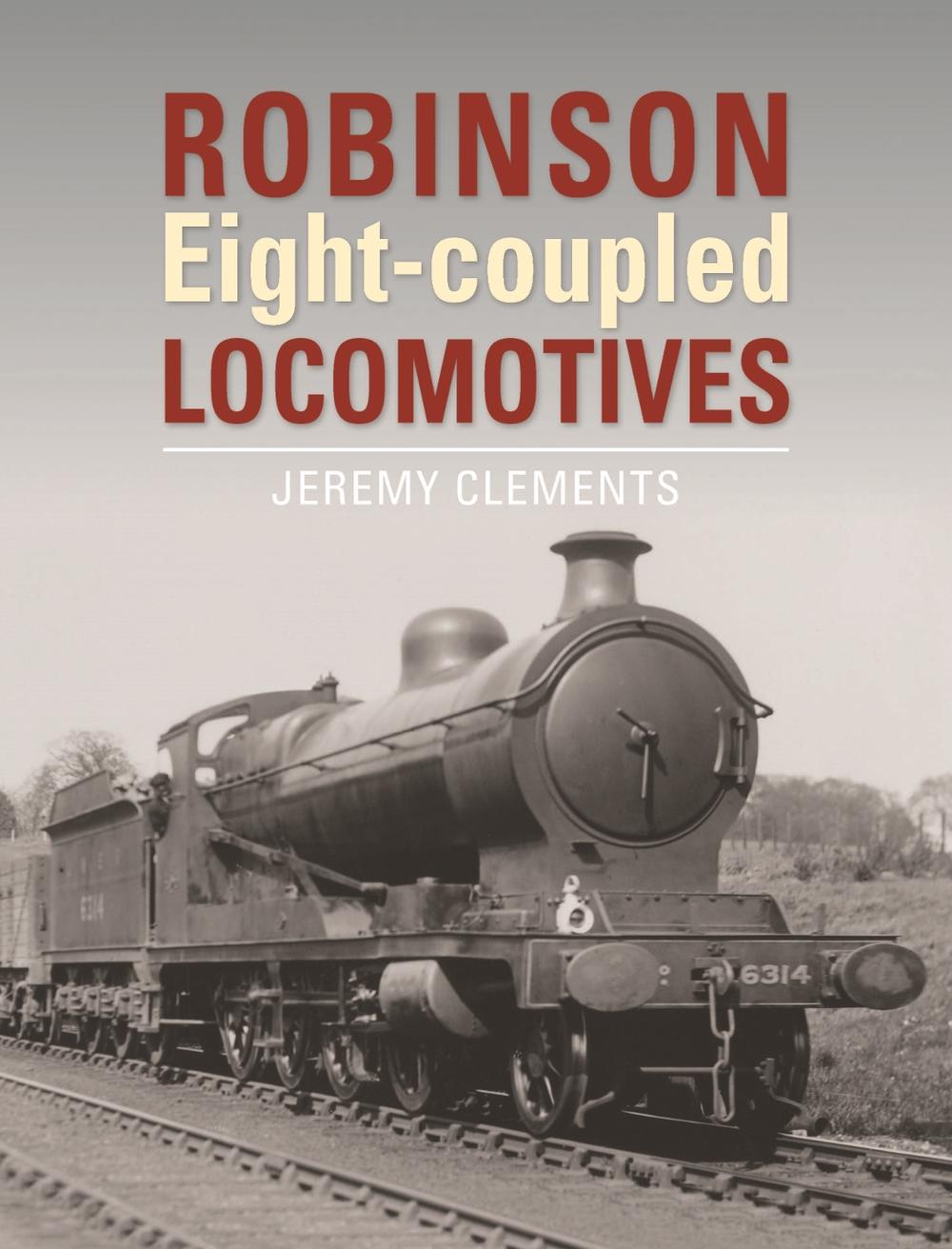
Robinson Eight-coupled Locomotives
$82.39
- Hardcover
224 pages
- Release Date
22 April 2022
Summary
Robinson’s Mighty Eight-Coupled Locomotives: A Legacy on Four Continents
Starting in 1902 with the Great Central Railway, J G Robinson’s heavy freight locomotive fleet expanded rapidly, driven by General Manager Sam Fay’s ambition to revitalize the company. By the Grouping of 1923, the GCR contributed 241 robust and efficient eight-coupled locomotives to the newly formed London & North Eastern Railway.
Simultaneously, the Robinson 2-8-0 was chosen as the standard for the…
Book Details
| ISBN-13: | 9781910809686 |
|---|---|
| ISBN-10: | 1910809683 |
| Author: | Jeremy Clements |
| Publisher: | Crecy Publishing |
| Imprint: | Crecy Publishing |
| Format: | Hardcover |
| Number of Pages: | 224 |
| Release Date: | 22 April 2022 |
| Weight: | 1.10kg |
| Dimensions: | 21mm x 288mm x 222mm |
You Can Find This Book In
What They're Saying
Critics Review
Right through their illustrious careers, heavy freight engines were often ignored by young platform-enders for their monotony, poor external condition, and general lack of glamour. For those of us on the Eastern Region, it was John Robinson’s Great Central 2-8-0s (along with the Thomspon rebuilds and ‘WDs’) that fell into this category. The vast fleet shrank quickly, but four lasted right to the end of ER steam in April 1966, and No. 63601 was preserved in the National Collection (and three others Down Under).Almost 60 years on, the engines that helped win two world wars are enjoying their deserved recognition, and the author has made a new and brave attempt to unravel the complex story of a design that ran to almost 670 examples and was owned or loaned to constituents of all the ‘Big’ Four’ companies. Many ended up in Egypt, Iran, China and Australia.Robinson’s 0-8-0s and 0-8-4Ts also qualify for inclusion, as does Kitsons’ side/pannier 2-8-2T hybrid for the J&A Brown mineral line in New South Wales (two survive as well).With so many owners, war duties and rebuilds and countless identity changes, this book demands that you to concentrate very hard, while the appendices are packed with statistics.There appears to be heavy reliance on already published definitive research carried out by the late Peter Rowledge, R. Touret and the RCTS, but no matter. This new take on a mast complex subject is most welcome. – HJ * Steam World *Covering the former GC’s eight-coupled class and their LNER derivatives, this book describes their background, design, construction, operation, and final disposal. It also describes the rebuilding which many underwent. While some classes had a relatively simple career, others, notably the 2-8-0s, had a complicated history, and the final fate of some remains unknown to this day.An early chapter examines GC freight working, followed by a look at the 0-8-0s, and the 2-8-0s of GC class 8K and LNER class O4. With more than 500 built as RODs, their extremely complicated history is presented as clearly as possible. The LNER rebuilt many O4s with various types of round-top firebox, reflecting Gresley’s preference, a process continued until 1958. Some were more extensively rebuilt into LNER class O1 with B1 type cylinders and outside Walschaerts gear to follow Thompson’s ideas, but it seems that there was little gain. Rebuilding was not new to the 2-8-0s, as Robinson used several for fuel experiments. Extensive tables list every locomotive with a brief summary of its career.There are illustrations of almost every variation of the classes described; several of the 2-8-0s are shown with evidence of a ‘rough shunt’ having caused bent running-plates at the front, questioning legendary robust Gorton design, but the locomotive remained in use. Most of the illustrations’ captions include a brief history of the subject. Fully recommended and, for what it has between its covers, good value. – CRB * The Railway Observer *The book is beautifully produced, and has clearly involved a huge amount of work by an author who with two others contributed to the massively thorough locomotive history of the main railway system in Ireland, The Great Southern Railways. – Kevin Jones * Railway and Canal Historical Society *
About The Author
Jeremy Clements
Throughout their illustrious careers, heavy freight engines were often ignored by young platform-enders for their monotony, poor external condition, and general lack of glamour. For those of us on the Eastern Region, it was John Robinson’s Great Central 2-8-0s (along with the Thomspon rebuilds and ‘WDs’) that fell into this category. The vast fleet shrank quickly, but four lasted right to the end of ER steam in April 1966, and No. 63601 was preserved in the National Collection (and three others Down Under).
Almost 60 years on, the engines that helped win two world wars are enjoying their deserved recognition, and the author has made a new and brave attempt to unravel the complex story of a design that ran to almost 670 examples and was owned or loaned to constituents of all the ‘Big’ Four’ companies. Many ended up in Egypt, Iran, China and Australia.
Robinson’s 0-8-0s and 0-8-4Ts also qualify for inclusion, as does Kitsons’ side/pannier 2-8-2T hybrid for the J&A Brown mineral line in New South Wales (two survive as well).
With so many owners, war duties and rebuilds and countless identity changes, this book demands that you to concentrate very hard, while the appendices are packed with statistics.
There appears to be heavy reliance on already published definitive research carried out by the late Peter Rowledge, R. Touret and the RCTS, but no matter. This new take on a mast complex subject is most welcome.
Returns
This item is eligible for free returns within 30 days of delivery. See our returns policy for further details.




